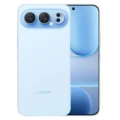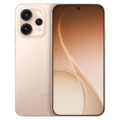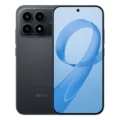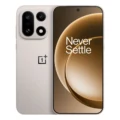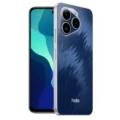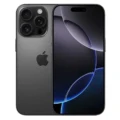iPhone 17 Pro Max vs Samsung Galaxy Z Fold7
The Apple iPhone 17 Pro Max and the Samsung Galaxy Z Fold7 each stand out in their respective categories, with the iPhone boasting a more refined, traditional design and the Galaxy Z Fold7 offering an innovative foldable experience. The iPhone 17 Pro Max features a 6.9-inch LTPO Super Retina XDR OLED display, delivering bright, sharp visuals with HDR10 and Dolby Vision support.
This makes it a top choice for users who want a classic, high-end display. The Galaxy Z Fold7, however, features a larger 8.0-inch foldable Dynamic AMOLED 2X display that offers a unique form factor, enabling users to enjoy a tablet-like experience when unfolded. Though the Z Fold7’s display is larger, the pixel density and the screen-to-body ratio of the iPhone are superior, making the iPhone’s display sharper overall.
In terms of performance, both devices offer cutting-edge processors. The iPhone 17 Pro Max is powered by the A19 Pro chip, ensuring excellent efficiency and seamless integration with iOS 26. It promises long-term support and smooth operation for users invested in the Apple ecosystem.
The Galaxy Z Fold7, on the other hand, runs on the Snapdragon 8 Elite chipset, coupled with the One UI 8 interface based on Android 16. This combination delivers excellent multi-tasking features, especially with the foldable design, making it perfect for users who prioritize multitasking and larger screen real estate. While both devices have impressive hardware, the iPhone edges out with its efficiency and optimization in software and hardware synergy.
When it comes to cameras, the iPhone 17 Pro Max offers a triple-camera setup with 48 MP (wide), 50 MP (ultrawide), and 64 MP (telephoto) lenses, ensuring versatile and high-quality photography. The iPhone’s ability to shoot ProRes video and support 3D spatial audio and video is a major plus for content creators. The Galaxy Z Fold7, on the other hand, features a 200 MP primary camera, 12 MP ultrawide, and 10 MP telephoto lens.
Its standout feature is the ability to shoot in 8K resolution, which is a major advantage for users who are looking for a device that supports professional-level video production. While both cameras are top-notch, the iPhone provides more consistency in terms of color accuracy and video recording capabilities, while the Z Fold7 excels in high-resolution photos and video, particularly for users interested in capturing ultra-detailed content.
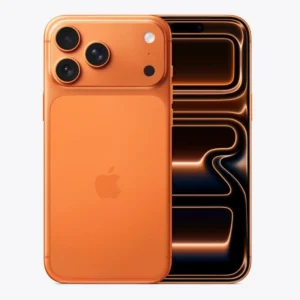

| |
| Price | ৳ 210,000.00 ৳ 247,000.00 |
| Our Rating | |
| Brand | Apple Samsung |
| Category | Smart Phones Smart Phones |
Price in BD
| Unofficial | 12GB+256GB - 2,10,000 TK 12GB+256GB - 2,47,000 TK |
General Info
| Announced | 9 September, 2025 10 July, 2025 |
| Status | Available Available |
| Released | 19 September, 2025 25 July, 2025 |
| Brand | Apple Samsung |
| Model | iPhone 17 Pro Max Galaxy Z Fold7 |
| Made By | USA South Korea |
Network
| Technology | GSM / CDMA / HSPA / EVDO / LTE / 5G GSM / CDMA / HSPA / EVDO / LTE / 5G |
| 2G bands |
GSM 850 / 900 / 1800 / 1900 CDMA 800 / 1900 GSM 850 / 900 / 1800 / 1900 CDMA 800 / 1900 |
| 3G bands |
HSDPA 850 / 900 / 1700(AWS) / 1900 / 2100 CDMA2000 1xEV-DO HSDPA 850 / 900 / 1700(AWS) / 1900 / 2100 CDMA2000 1xEV-DO |
| 4G bands |
1, 2, 3, 4, 5, 7, 8, 12, 13, 17, 18, 19, 20, 25, 26, 28, 30, 32, 34, 38, 39, 40, 41, 42, 48, 53, 66 - A3526 1, 2, 3, 4, 5, 7, 8, 12, 13, 14, 17, 18, 19, 20, 25, 26, 28, 29, 30, 32, 34, 38, 39, 40, 41, 42, 48, 53, 66, 71 - A3257 1, 2, 3, 4, 5, 7, 8, 11, 12, 13, 14, 17, 18, 19, 20, 21, 25, 26, 28, 29, 30, 32, 34, 38, 39, 40, 41, 42, 48, 53, 66, 71 - A3525 1, 2, 3, 4, 5, 7, 8, 12, 13, 17, 18, 19, 20, 25, 26, 28, 30, 32, 34, 38, 39, 40, 41, 42, 48, 66 - A3527 1, 2, 3, 4, 5, 7, 8, 12, 13, 17, 18, 19, 20, 25, 26, 28, 38, 39, 40, 41, 66 - International |
| 5G bands |
1, 2, 3, 5, 7, 8, 12, 20, 25, 26, 28, 30, 38, 40, 41, 48, 53, 66, 70, 75, 77, 78, 79 SA/NSA/Sub6 - A3526 1, 2, 3, 5, 7, 8, 12, 14, 20, 25, 26, 28, 29, 30, 38, 40, 41, 48, 53, 66, 70, 71, 75, 77, 78, 79, 258, 260, 261 SA/NSA/Sub6/mmWave - A3257 1, 2, 3, 5, 7, 8, 12, 14, 20, 25, 26, 28, 29, 30, 38, 40, 41, 48, 53, 66, 70, 71, 75, 77, 78, 79 SA/NSA/Sub6 - A3525 1, 2, 3, 5, 7, 8, 12, 20, 25, 26, 28, 30, 38, 40, 41, 48, 66, 70, 75, 77, 78, 79 SA/NSA/Sub6 - A3527 1, 2, 3, 5, 7, 8, 12, 20, 25, 26, 28, 38, 40, 41, 66, 71, 77, 78 SA/NSA/Sub6 - International SA/NSA/Sub6/mmWave - USA |
| VoLTE | |
| Speed | HSPA, LTE, 5G, EV-DO Rev.A 3.1 Mbps HSPA, LTE (CA), 5G |
Body
| Dimensions | 163.4 x 78 mm (6.43 x 3.07 in) Unfolded: 158.4 x 143.2 x 4.2 mm / Folded: 158.4 x 72.8 x 8.9 mm |
| Thickness | 8.8 mm |
| Weight | 233 g (8.22 oz) 215 g (7.58 oz) |
| SIM Slot | Hybrid SIM |
| SIM SIM (Subscriber Identity Module) is a small card that contains mobile network subscriber's account information. This allows the phone using the card to attach to a mobile network. The SIM card is most commonly associated with GSM and UMTS mobile networks. Moving a SIM card from one phone to another allows a subscriber to switch mobile phones without having to contact their mobile network carrier. SIM cards can also be used by a phone to store limited amounts of data, such as phone numbers and text messages. |
Nano-SIM + eSIM + eSIM (max 2 at a time; International) eSIM + eSIM (8 or more, max 2 at a time; USA) Nano-SIM + Nano-SIM (China) Nano-SIM + Nano-SIM + eSIM + eSIM (max 2 at a time) / Nano-SIM + Nano-SIM + multiple eSIM (max 2 at a time) |
| Build | Glass front (Ceramic Shield 2), aluminum alloy frame, aluminum alloy back/ glass back (Ceramic Shield) Glass front (Gorilla Glass Victus Ceramic 2) (folded), plastic front (unfolded), glass back (Gorilla Glass Victus 2), aluminum frame |
| Colors | Silver, Cosmic Orange, Deep Blue Blue Shadow, Silver Shadow, Jet Black, Mint |
| IP Rating | IP68 dust tight and water resistant (immersible up to 6m for 30 min) IP48 dust and water resistant (dust > 1mm; immersible up to 1.5m for 30 min) |
| Models | SM-F966B, SM-F966B/DS, SM-F966U, SM-F966U1 |
| Others | Apple Pay (Visa, MasterCard, AMEX certified) Advanced Armor aluminum frame |
Display
| Display Type Display Technology => A number of display technologies and types used in mobile phones => TFT (Thin Film Transistor), IPS (In-Place Switching), OLED (Organic Light Emitting Diode), AMOLED (Active-Matrix Organic Light-Emitting Diode), Super AMOLED (an even advanced version of AMOLED), Resistive Touchscreen (Resistive touchscreens contain two layer of conductive material with a very small gap between them which acts as a resistance), Capacitive Touchsceen (Capacitive touchscreen technology consists of a layer of glass coated with a transparent conductor) | LTPO Super Retina XDR OLED Foldable Dynamic LTPO AMOLED 2X |
| Size | 6.9 inches, 115.6 cm2 8.0 inches, 204.2 cm2 |
| Screen to Body | ~90.7% ~90.0% |
| Features | HDR10, Dolby Vision HDR10+ |
| Brightness | 1000 nits (typ), 1600 nits (HBM), 3000 nits (peak) 2600 nits (peak) |
| Refresh Rate | 120Hz 120Hz |
| Resolution | 1320 x 2868 pixels 1968 x 2184 pixels |
| Aspect Ratio | 19.5:9 |
| Pixel Density Pixel Density (PPI) is refers to the concentration of pixels on a particular display, measured in pixels per inch (ppi). Pixel density is calculated by dividing the diagonal pixel resolution of a display by its diagonal size, higher pixel density better display quality. | ~460 ppi ~368 ppi |
| Protection | Ceramic Shield 2 |
| Bezel-less | Yes with punch-hole display |
| Touch Screen | Capacitive Touchscreen, Multi-touch Capacitive Touchscreen, Multi-touch |
| Others |
Anti-reflective coating
Titanium plate layer for display support Cover display: Dynamic LTPO AMOLED 2X, 120Hz, Corning Gorilla Glass Ceramic 2 6.5 inches, 1080 x 2520 pixels, 422 ppi |
Performance
| Chipset Chipset is a group of integrated circuits designed to perform one or a more dedicated functions, often with real time computing constraints, Popular smartphones are equipped with more advanced embedded chipsets that can do many different tasks depending on their programming. | Apple A19 Pro (3 nm) Qualcomm SM8750-AC Snapdragon 8 Elite (3 nm) |
| Fabrication | 3 nm |
| CPU CPU (Central Processing Unit) mostly known as processors, CPU processes instructions in order to carry out certain functions that make your device operate properly. Processors are often described as the brain of computers, smartphones and tablets, Smartphones and tablets rely on processors to carry out their every task, Processors are an incredibly important factor in selecting any type of computing device, including your smartphone. | Hexa-core Octa-core (2x4.47 GHz Oryon V2 Phoenix L + 6x3.53 GHz Oryon V2 Phoenix M) |
| CPU Cores | 6 cores |
| GPU GPU (Graphics Processing Unit) is a single-chip processor designed to rapidly manipulate and alter memory to accelerate the creation of images in a frame buffer intended for output to a display, This includes things such as lighting effects, object transformations, and 3D motion. | Apple GPU (6-core graphics) Adreno 830 (1200 MHz) |
| Architecture | 64-bit |
| OS | iOS 26 Android 16, up to 7 major Android upgrades |
| UI | One UI 8 |
Memory
| RAM RAM (Random Access Memory) is a type of computer memory that can be accessed randomly, any byte of memory can be accessed without touching the preceding bytes that allows information to be stored and accessed quickly from random locations. RAM is the most common type of memory found in computer systems, smartphones, tablets and other electronic devices. | 12 GB 12 GB, 16 GB |
| ROM | 256 GB 256 GB, 512 GB, 1 TB |
| Card Slot Memory Card Slot is a special slot for inserting a memory card. Memory cards allow you to expand the phone's built-in memory, A memory card (sometimes called a flash memory card or a storage card) is a small storage medium used to store data such as text, pictures, audio, and video, for use on small, portable or remote computing devices such as mobile phones, mp3 players, digital cameras. | No No |
| UFS | NVMe 4.0 |
Main Camera
| Triple |
48 MP, f/1.6, 24mm (wide), 1/1.28", 1.22µm, dual pixel PDAF, sensor-shift OIS 48 MP, f/2.8, 100mm (periscope telephoto), 1/2.55", 0.7µm, PDAF, 3D sensor‑shift OIS 48 MP, f/2.2, 13mm, 120˚ (ultrawide), 1/2.55", 0.7µm, PDAF TOF 3D LiDAR scanner (depth) 200 MP, f/1.7, 24mm (wide), 1/1.3", 0.6µm, multi-directional PDAF, OIS 10 MP, f/2.4, 67mm (telephoto), 1/3.52", 1.12µm, PDAF, OIS 12 MP, f/2.2, 123˚, 12mm (ultrawide), 1/3.2", 1.12µm |
| OIS | Yes |
| Features | HDR (photo/panorama) HDR, panorama |
| Flash Flash Light => There is commonly two types of flash lights are used in camera mobile phones, LED Flash (LED flash offers lower power consumption with drive circuitry that takes up very little room, LEDs can be strobed faster than any other light source), Xenon Flash (xenon flash produces an extremely intense full-spectrum white light for a very short duration) | Dual-LED dual-tone flash LED flash |
| Video Recording | 4K@24/25/30/60/100/120fps, 1080p@25/30/60/120/240fps, 10-bit HDR, Dolby Vision HDR (up to 60fps), ProRes, ProRes RAW, Apple Log 2, 3D (spatial) video/audio, stereo sound rec. 8K@30fps, 4K@60fps, 1080p@60/120/240fps (gyro-EIS), 720p@960fps (gyro-EIS), 10-bit HDR, HDR10+ |
| Autofocus | |
| Settings | Exposure compensation, ISO control Exposure compensation, ISO control |
| Zoom | 4x optical zoom 3x optical zoom |
Selfie Camera
| Single |
18 MP multi-aspect, f/1.9, (wide), PDAF, OIS SL 3D, (depth/biometrics sensor) 10 MP, f/2.2, 18mm (ultrawide), 1.12µm / Cover camera: 10 MP, f/2.2, 24mm (wide), 1.12µm |
| Features | HDR, Dolby Vision HDR, 3D (spatial) audio, stereo sound rec., ProRes RAW, Apple Log 2 HDR |
| Video Recording | 4K@24/25/30/60fps, 1080p@25/30/60/120fps, gyro-EIS 4K@30/60fps, 1080p@30/60fps, gyro-EIS |
Sound
| Loudspeaker | |
| 3.5mm jack | |
| Others |
with stereo speakers
32-bit/384kHz audio Tuned by AKG |
Connectivity
| WLAN Wi-Fi is a popular wireless networking technology using radio waves to provide high-speed network connections that allows devices to communicate without cords or cables, Wi-Fi is increasingly becoming the preferred mode of internet connectivity all over the world. | Wi-Fi 802.11 a/b/g/n/ac/6e/7, tri-band, hotspot Wi-Fi 802.11 a/b/g/n/ac/6e/7, tri-band, Wi-Fi Direct |
| Bluetooth Bluetooth is a wireless communications technology for exchanging data between mobile phones, headsets, computers and other network devices over short distances without wires, Bluetooth technology was primarily designed to support simple wireless networking of personal consumer devices. | 6.0, A2DP, LE 5.4, A2DP, LE, aptX HD |
| Positioning | GPS (L1+L5), GLONASS, GALILEO, BDS, QZSS, NavIC GPS, GALILEO, GLONASS, BDS, QZSS |
| NFC NFC (Near field communication) is a set of standards for smartphones and similar devices to establish peer-to-peer radio communications with each other by touching them together or bringing them into proximity, usually no more than a few inches. | |
| Infrared Infrared connectivity is an old wireless technology used to connect two electronic devices. It uses a beam of infrared light to transmit information and so requires direct line of sight and operates only at close range. | |
| Radio | |
| USB | Type-C 3.2 Gen 2, DisplayPort Type-C 3.2, OTG |
Sensors
| Sensors Sensors are electronic components that detects and responds to some type of input from the physical environment. The specific input could be light, heat, motion, moisture, pressure and location, The output is generally a signal that is converted to use in computing systems, a location sensor, such as a GPS receiver is able to detect current location of your electronic device. | accelerometer, gyro, proximity, compass, barometer accelerometer, gyro, proximity, compass, barometer |
| Fingerprint | Face ID side-mounted |
| Face Unlock | Yes Yes |
| Others |
Ultra Wideband (UWB) support (gen2 chip) Emergency SOS, Messages and Find My via satellite Samsung DeX (desktop experience support) Ultra Wideband (UWB) support Circle to Searc |
Battery
| Battery Type Battery Type => Cell phones run on various kinds of batteries depending on the manufacturer, phone size or shape and features. There are basically four types of cell phone batteries => Lithium Polymer, Lithium Ion, Nickel Metal Hydride and Nickel Cadmium. | Li-Ion (Lithium Ion) Li-Pol (Lithium Polymer) |
| Capacity Battery Capacity is a measure (typically in Amp-hr) of the charge stored by the battery, and is determined by the mass of active material contained in the battery. The battery capacity represents the maximum amount of energy that can be extracted from the battery under certain conditions. | 4832 mAh - Nano SIM model / 5088 mAh - eSIM only model 4400 mAh |
| Charging |
Wired, PD2.0
25W wired, QC2.0 15W wireless 4.5W reverse wireles |
| Wireless | 25W wireless (MagSafe), 50% in 30 min / 15W wireless (MagSafe) - China only / 25W wireless (Qi2) |
| Reverse | 4.5W reverse wired |
| Charging Time | 50% in 20 min 50% in 30 min |
Tests

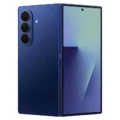
|
Disclaimer Note
We always try our best to keep our website content and information updated and correct, the material and information contained on our website is for general information purposes only, You should not rely upon the material and information as a basis for making any business, legal or any other decisions.
